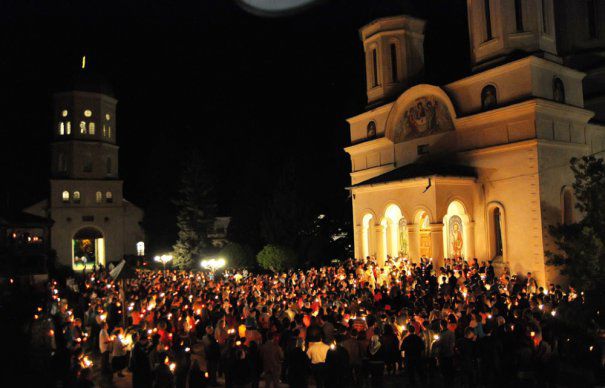Easter Traditions in Romania
For Christians, Easter is a deeply religious holiday, celebrating the day Jesus arose from the dead after the Crucifixion.
Romanians start preparing for this special day long before The Easter. Firstly they start purifying their body and thoughts during the 48 days period before the Easter by restraining from meat, eggs or dairy (animal products) and by praying and going to Church more often. This Lent period is called Postul Pastelui and is the longest lent period of the year. During this period, no weddings are being served by priests and partying is not allowed.
Free Romanian Language and Culture Class
Christian or Pagan Celebration?
Nonetheless, as in almost all countries, this Celebration is an extraordinary mixture between paganism and religious
symbols.
The Christian tradition says that when the Virgin Mary came to cry for her crucified son, she placed a basket of eggs under the Cross. The eggs turned red as a symbol of the blood that flowed from the wounds of Jesus, and since then we paint Easter eggs. So in the Orthodox Church, the priest gives only red eggs to the faithful.
But we also see the Easter Bunny delivering these eggs and we cannot stop from asking ourselves why would a Bunny deliver eggs?
Well, this tradition was taken from the Anglo-Saxon pagan tradition. There is a legend that the Goddess of spring, Eostre (Easter) found a wounded bird in winter, and the only way to save it was to turn it into a rabbit. Although it wasn’t a bird any more, the rabbit could still lay eggs, and to thank the Goddess for saving her life, the rabbit was decorating her eggs and was giving them to her savior.
The Easter Night
On the night before Easter, Romanians go to church dressed in new clothes as to celebrate Christ resurrection in His new body of light. At midnight, everyone lights a candle from the priest’s candle, which symbolizes both the return of Jesus from the dead and also the power of one powerful soul to light hundreds of other souls.
After attending the religious service which ends at about 4 o’clock in the morning, everyone goes home, carefully holding their candle and extinguishes it on the door frame.
The best place to feel the Celebation and witness it, is the Easter service in one of the churches and Monasteries you can find anywhere. Even Romanians who consider themselves quite cynical about the church, usually make the effort to go to Easter mass. While services nominally get underway shortly before midnight, if you want a decent view, or even to get inside, you will need to be at the church by around 23:00. Otherwise you would be only able to admire a big crowd surrounding the church.
Free Romanian Language and Culture Class
The Easter Morning
On Easter morning the faithful wash their faces with water from a bowl , into which mothers put a red egg and a coin. It is said that if you wash your face with this water, you will be healthy and beautiful.
The first thing everybody eats is a red egg and this is done only after following a small ritual of breaking eggs. Two people hold two eggs, one of them saying “Hristos a Înviat” (Christ has risen), the other saying “Adevărat a Înviat” (He has Risen indeed)

The Painted Eggs
Bucovina is renowned for having the most beautiful Easter eggs “oua incondeiate” (painted eggs) which are made using a complicated procedure that requires much patience and skill. On the background color of the egg, women draw beautiful patterns with melted beeswax, turning a simple egg into an amazing piece of art.
The food
If you spend Easter in a traditional Romanian family (or at a guest house that respects the holiday tradition), you will see several specific dishes on the table for the occasion. Besides the Easter eggs Romanians eat ‘Pasca‘, the traditional Romanian Easter cake, which is a type of sponge cake filled with cheese, eggs and raisins. Sweet bread (cozonac), which is a slightly sweet yeast-raised egg bread, the lamb soup, lamb steak, haggis (drob) – which is a traditional national Easter dish that uses the organs of the lamb.
Drop us a line or comment to tell us how you spent this holiday in Romania and what impressed you most.
Romanian Language Essentials
- “100 Days Romanian Survival Kit”
- Romanian in Six weeks.




